
Score breakdown
Things we like
- Easily the best 4X4 wagon to drive
- Trend trim level is worth the additional cost over base Ambiente
- Comfortable and well equipped cabin
Not so much
- $3900 extra for the V6 Sport is money well spent
- Four-cylinder lacks refinement and towing muscle of the V6
- Occasional gearbox shunt
UPDATE, November 16: Ford Everest vs Toyota Prado
We've put the new-generation Ford Everest up against its most popular and obvious rival, the Toyota Prado. Get the full story at the link below.

Story continues: Ford Everest Trend review
If you’re looking for some truly riveting reading, we’d suggest diving into the sales split percentages of the previous-generation Ford Everest. Okay, that’s exaggerating things a bit – it’s actually about as interesting as plain Weet-Bix with no milk – but the data does hold some intriguing nuggets.
Within the figures you’ll discover that of the 40,000 or so Ford Everests sold since it was introduced in 2015, the variant most Aussies bought was the car we’re testing here: the mid-spec Trend. The attraction is obvious: more luxury than a base Ambiente and nearly all of the chassis goodness and off-road ability of the top trims without the additional cost.
Now that we have a new second-generation Everest, however, that logic starts to falter. This time around, Ford has bolstered the model range with a fresh engine – a more powerful 3.0-litre V6 turbo-diesel – which is only available on the two top model grades, the V6 Sport and flagship Platinum.
That’s left the Trend to make do with a (mostly) carryover 2.0-litre bi-turbo four-cylinder diesel, which is down on power and torque against the V6.
So, is the Trend still the Everest to buy? Or are the V6 models worth the extra spend? Let’s find out.
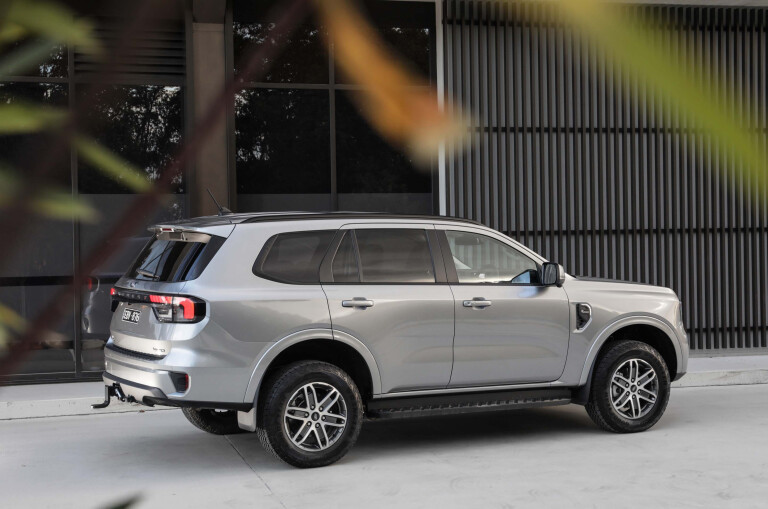
JUMP AHEAD
- How much is it and what do you get?
- How do rivals compare on value?
- Interior comfort & storage
- How safe is it?
- What’s it like to drive?
- Warranty & running costs
- VERDICT
- Specifications
How much is it and what do you get?
As before, the Trend makes an attractive case when it comes to value. Prices start at $60,290 for the Trend 4x2 and stretch to $65,290 for the all-wheel drive model we’re testing here (both before on-road costs).
That’s around $7000 more than the entry-level Ambiente but the Trend brings a noticeable uptick in luxury and equipment.
Every Everest scores LED headlights and tail lights, wireless Apple CarPlay and Android Auto, sat-nav, digital radio, rain-sensing wipers, keyless entry and power folding mirrors.
But where the Ambiente only comes with five seats as standard, the Trend adds a third row of seating to take that number up to seven. It also rolls on larger 18-inch alloys, adds rear privacy glass, a power tailgate and heated wing mirrors with puddle lamps.
The basics
| Body | 5-door, 7-seat large SUV |
|---|---|
| Drive | four-wheel |
| Engine | 2.0-litre four-cylinder turbo diesel |
| Transmission | 10-speed automatic |
| Power & torque | 154kW / 500Nm |
| Transmission | 10-speed automatic |
| Fuel consumption | 7.2L/100km (claimed) |
| Boot space 3 / 2 / 1 row | 295L / 898 L / 1823 L |
| Toyota Fortuner: 200L / 716L / 1080L | |
| Price | $65,290 + on-road costs |

Inside, the Trend is considerably more upmarket thanks to leather upholstery (Ambiente has cloth seats), eight-way power adjustment for the driver’s seat, a leather-wrapped steering wheel and the central infotainment screen grows from 8.0-inches to 12.0in.
You also score a second glovebox in the upper section of the dash, and crucially, if you plan on taking your Everest off-road, 4x4 versions of the Trend gain two additional drive modes (Sand and Mud/Ruts) and a useful off-road screen that allows you to control key functions like locking the rear diff and see information like steering and pitch/roll angles.
It also provides a high-resolution video feed of what lies ahead, providing you are among the 85 per cent of customers Ford expects will option the $1950 Touring Pack that also adds a 360-degree camera, zone lighting and a tow bar with integrated trailer brake controller.
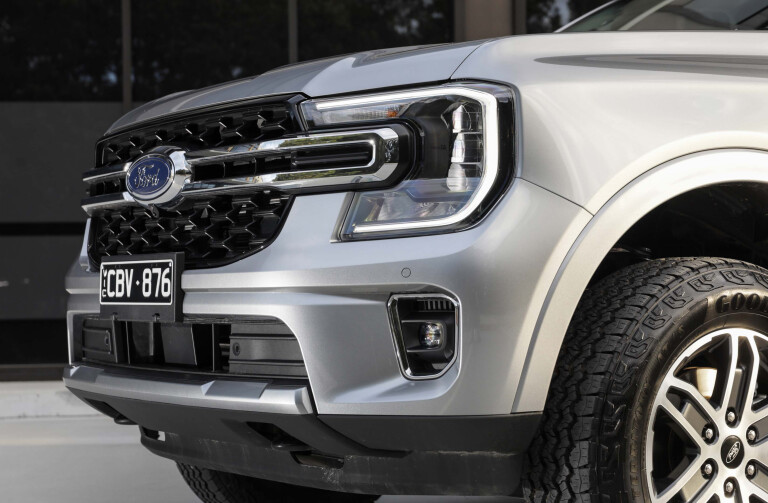
The front-facing camera feed is a clever piece of tech that doesn’t only take the stress out of creeping over crests and diving into deep pits but also projects virtual tyre tracks ahead of you, which makes straddling ruts and other obstacles much easier.
Where the Trend’s sense of value hits a hurdle, however, is when you line it up against the V6 Sport.
At $69,090 before on-road costs, the V6 Sport is the next rung up the Everest ladder but only commands a $3900 premium over a Trend 4x4. It gains the more powerful V6 engine and also benefits from larger 20-inch wheels, sharper looking black exterior accents, a more powerful 10-speaker sound system and both front seats are electrically adjustable, heated and ventilated. That’s money well spent in our book.

How do rivals compare on value?
Aussies love a workhorse that can tow, take the kids to school and also tackle the Birdsville track so it’s no surprise the Everest competes in a crowded and cut-throat segment.
Key ute-based rivals include the Toyota Fortuner, Mitsubishi Pajero Sport and Isuzu MU-X and on price alone, each of these rivals undercuts the Everest Trend 4x4 by a healthy margin.
An equivalent mid-spec GXL Fortuner or Pajero Sport GLX 4WD, for example, will set you back around $55,000 which is a $10K saving compared to the Everest. The Isuzu MU-X is closer to the Ford at $61,490 for an equivalent mid-tier LS-U 4x4, but that still represents a saving of $3800. All these prices are before on-road costs.

This price discrepancy doesn’t make the Everest poor value, however. While it can’t match its rivals on price, the Ford obliterates them for cabin comfort, standard equipment levels, interior tech, powertrain performance and driving dynamics.
Both the Toyota and Mitsubishi are also significantly older than the box-fresh Ford and while the Isuzu is the most modern alternative, the second-generation version having launched here in 2021, it’s still not in the same league as the Everest for refinement or road manners.
In fact, in pretty much every metric, the new Everest makes its traditional ladder frame competitor set feel a touch agricultural, which helps to justify its higher initial outlay.
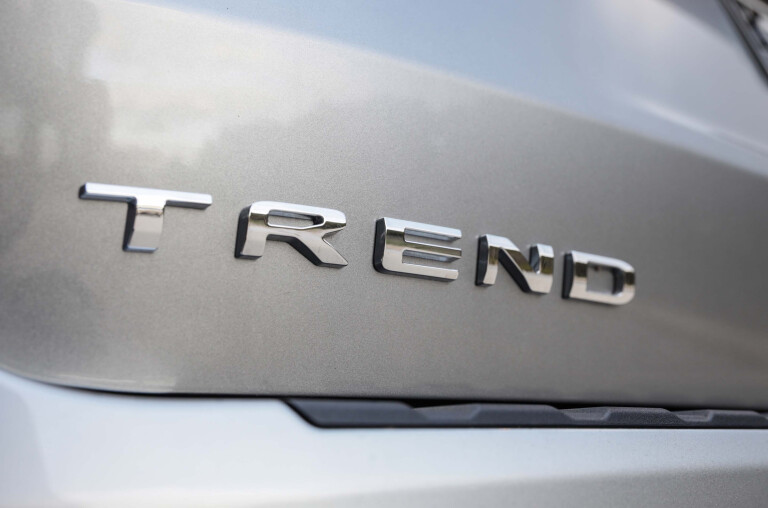
Interior comfort & storage
That sense of being a cut above continues when you slip inside.
In a segment plagued with dodgy driving positions, hard cabin plastics and ancient infotainment systems, it’s refreshing to jump into an interior that nails the basics.
Up front, the Trend’s leather-appointed seats are comfortable, the mix of materials strikes a nice balance between feeling premium and hardwearing, and there’s ample storage thanks to large cup holders, generous door bins and a deep centre console. The cabin design feels modern and premium, too, and the Everest trounces its rivals when it comes to infotainment.
The portrait-style 12.0-inch central screen is quick to respond and easy to navigate thanks to a logical menu structure and, mercifully, it retains a dedicated panel for the HVAC controls at the bottom so you don’t have to click through multiple submenus to adjust the temperature or fan speed.
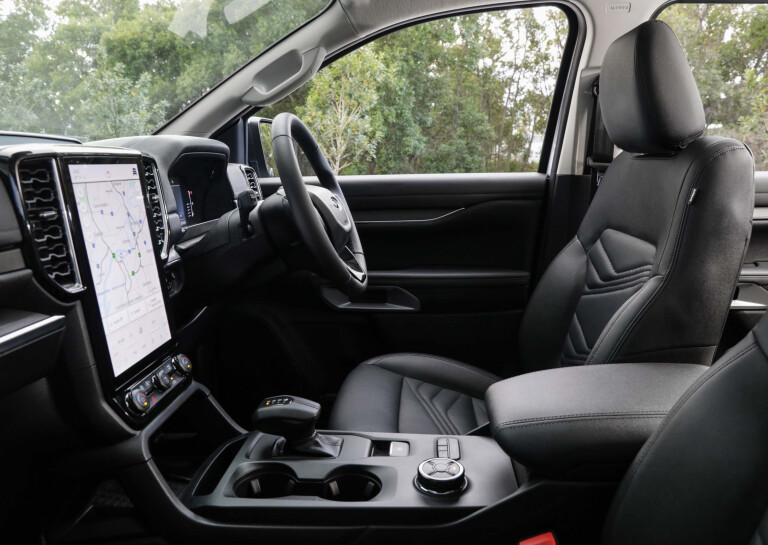
As for connectivity, Apple CarPlay worked faultlessly during our stint behind the wheel and there’s a wireless charging pad to go with three USB ports for front passengers.
There’s also plenty of room in all three rows. Like the new Ranger, the Everest is built on Ford’s heavily updated T6.3 platform and the wheelbase has been stretched by 50mm. Unlike the new Ranger, however, which has a slightly cramped rear seat, the Everest’s second row offers plenty of space.
Ford says the middle seat has been redesigned to improve passenger comfort and Trend variants and above also score an additional set of USB ports (to make a total of five), which is useful to keep the kids’ devices powered up.
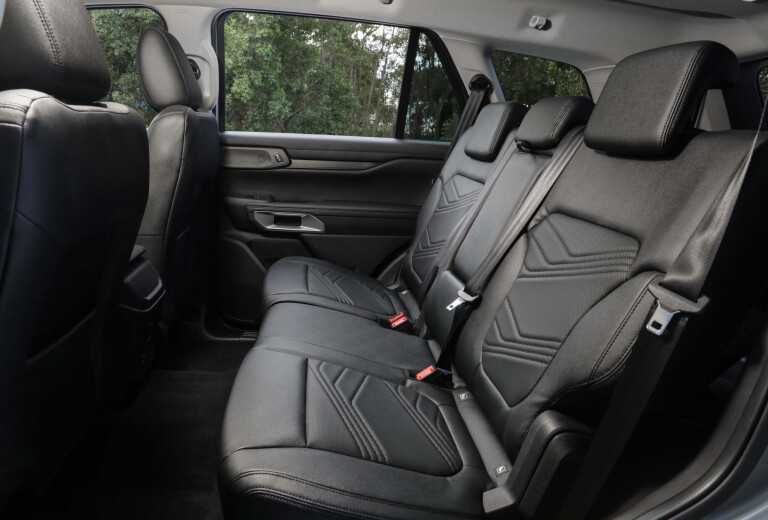
As before, the second row slides but its movement fore and aft has been increased this time around to improve access to the third row. Speaking of, those relegated to the very back seats won’t feel too hard done by thanks to improved shoulder room and decent vision out through large windows.
Taller adults might find it a touch squishy for knee- and headroom but there’s plenty in the way of amenity including two cup holders, a slot to store a tablet and dedicated air vents in the roof.
And importantly, curtain airbags cover all three rows of seats regardless of what Everest variant you choose. In fact, the level of standard safety equipment is impressively high across the entire Everest range.
2023 Ford Everest boot space
Boosting the wheelbase and fitting a boxier, more muscular body has also improved the Everest’s luggage space. With all three rows of seats in use, Ford says there’s 259L of boot space available which is large enough for a few golf bags stacked on top of one another.
Drop the third row and your boot grows to a generous 898L or with all the back seats folded you’ll have 1823L at your disposal. Need some context? A Fortuner offers 200L/716L/1080L so it’s a clear advantage to the Ford in the load-lugging stakes.

How safe is it?
Every version boasts a five-star ANCAP safety rating and the following safety equipment is included as standard
| Nine airbags |
| Autonomous emergency braking (forward and reverse) |
| Adaptive cruise control with stop & go function |
| Blind-spot monitoring |
| Rear cross-traffic alert |
| Lane-keep alert and assist |
| Parking sensors front and rear |
| Rear-view camera |
| Traffic sign recognition |
Even better is how well the active safety systems are calibrated. ESC interventions are smooth and unobtrusive, and the lane-keep system is one of the best we’ve encountered.
Unlike some lane-centring functions which can be overly sensitive or pull jerkily at the wheel, the Everest does a commendable job of keeping you smoothly in the middle of your lane.
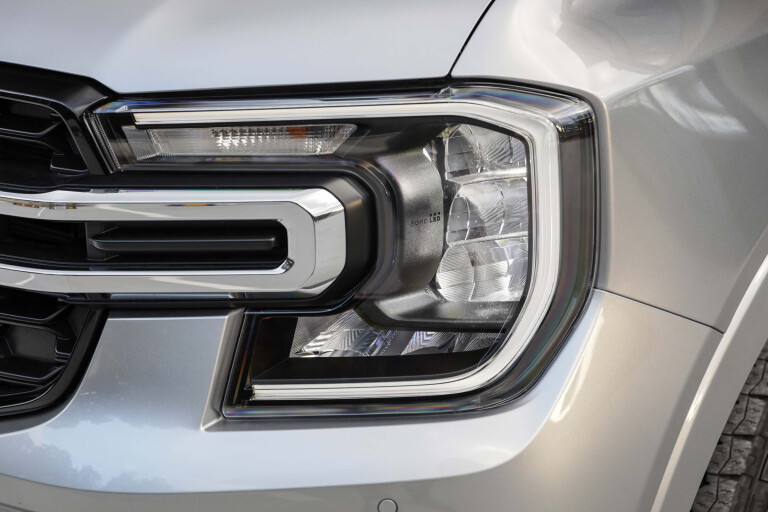
What’s it like to drive?
This is the Everest’s biggest strength. In a segment that tends to feel fairly agricultural when it comes to steering feel and bump compliance, the Everest’s dynamics are remarkably polished. Our time with the Trend took in some tight and challenging mountain roads that would have made most large SUVs feel slow and ponderous, yet the Ford behaved more like a traditional monocoque family SUV than a ladder-framed wagon.
The steering is naturally weighted and a good speed at 3.2 turns lock to lock, plus there’s none of the vagueness off centre that you get with many rivals. The seating position is bang on, too, thanks to ample reach and tilt adjustment on the steering wheel.
Excellent visibility is aided by enormous wing mirrors and cabin refinement is class-leading. Ford went to great lengths to reduce wind noise and improve cabin insulation, and the result is a large off-roader that’s impressively quiet on the freeway.

Body control is also nicely contained for such a big vehicle. On twisty sections, the Trend stayed commendably flat and unflustered despite several quick changes of direction. Happily, the ride is also relatively supple, despite the firm hand needed to keep the body in check, and the Trend’s 18-inch alloys do a decent job of ironing out all but the biggest of surface imperfections.
You do occasionally notice a telltale tremor or shake through the body that plagues all body-on-frame vehicles but for the most part, the Everest handles like a conventional SUV.
One thing that does erode the cabin’s sense of refinement, however, is engine noise. The 2.0-litre bi-turbo is impressively quiet on the freeway but it can get vocal at higher revs and under hard acceleration there’s noticeable diesel clatter to contend with.
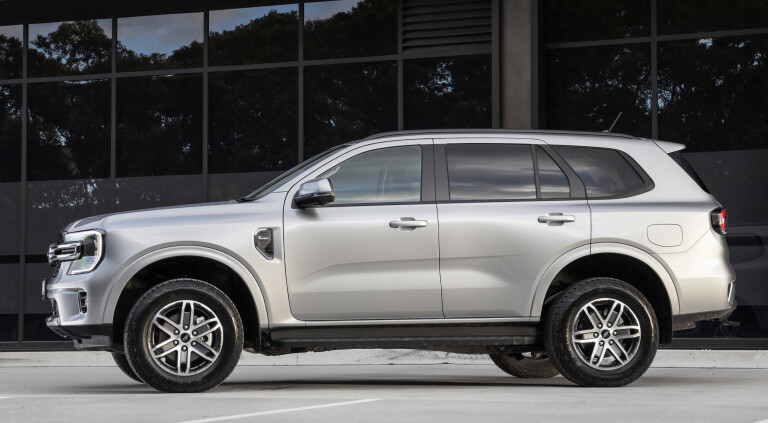
At least there’s plenty of performance to exploit. With 154kW/500Nm on tap, the diesel feels reassuringly muscular and while the engine is mostly carried over from the previous Everest, Ford’s engineers have made changes to improve reliability.
The 10-speed automatic transmission has also been improved. In the previous Everest and Ranger, it could hunt for the right ratio but this time around it’s more assertive. In saying that, the gearbox isn’t perfect. We felt the occasional bum shift and on a part throttle over hilly terrain, there was some driveline shunt.
Still, there’s no denying the 2.0-litre/10-speed combo is one of the strongest powertrains in this segment. It’s just a shame that there’s an even better engine within the Everest range…
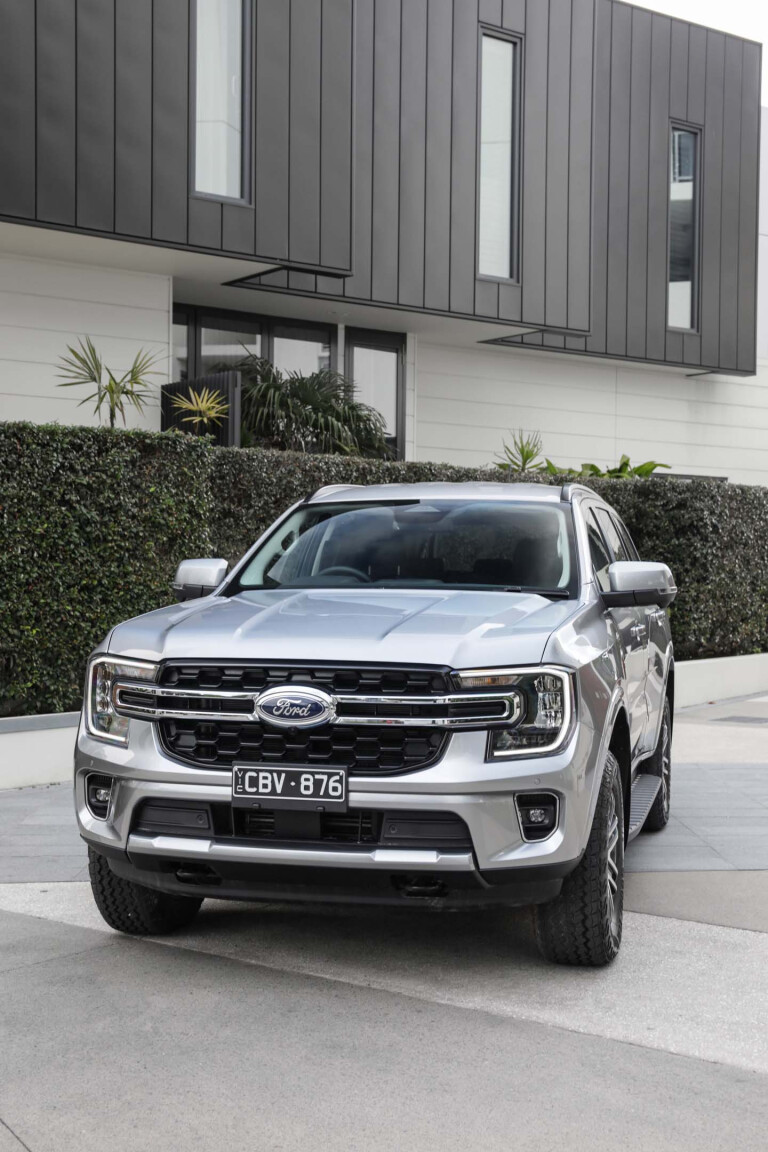
The 3.0-litre V6 is smoother, quieter and with 184kW/600Nm it’s also noticeably more muscular. Weirdly, the performance gap between the 2.0-litre and 3.0-litre engines feels wider than it does in the Ranger. In the Everest, the V6 is noticeably more urgent and while every Everest has a braked towing capacity of 3500kg, it’s the larger capacity engine we’d recommend if you plan to tow on a regular basis.
Away from paved roads, the Everest continues to be one of the most capable 4x4 wagons you can buy. Ford’s engineering team set a goal early in development that the second-gen Everest had to be better to drive on-road and off-road, not one or the other, and in several key metrics this new model is an improvement.
Moving the wheels closer to the corners of the body has increased wheel articulation and reduced head toss for occupants. Shorter overhangs have also improved the approach and departure angles, which now sit at 30.4 degrees and 25.3 degrees respectively. The ramp-over angle is also better than before at 22.2 degrees.
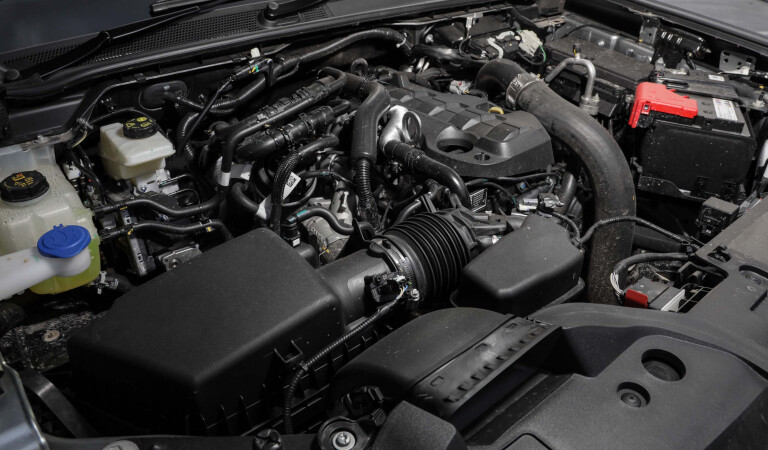
Warranty & running costs
The Ford Everest comes with a five-year, unlimited-kilometre warranty with 12 months of roadside assistance also included.
You’ll need to visit the dealer for scheduled servicing every 12 months or 15,000km, whichever occurs first, and the most you’ll pay for each of the first four visits is $329 under Ford’s capped-price servicing program.
VERDICT
Even at the end of its lifecycle, the previous-generation Everest was the best body-on-frame wagon you could buy. This second generation enhances Ford’s leadership in this segment.
It’s better to drive, more capable off-road and has a comfier, tech-laden cabin. It’s also miles ahead of its competition for on-road dynamics and refinement.
Where the plot thickens slightly is when it comes to which version of the Everest to buy. For years the Trend has been the logical choice and much of what made it so attractive continues into this second generation.
But the inclusion of the Everest V6 Sport, which is sharper to look at, better equipped and has a smoother engine that’s superior at towing for just $3900 more would make us think twice about opting for the Trend 4x4.
It’s close, and both variants make a compelling case, but to our minds the V6 Sport just edges it.
Reading the sales split percentages in a few years to see which way more Aussies jump might actually be genuinely interesting…
2023 Ford Everest Trend specifications
| Body | 5-door, 7-seat large SUV |
|---|---|
| Drive | four-wheel |
| Engine | 2.0-litre DOHC 4cyl bi-turbo diesel |
| Compression | 16.5:1 |
| Bore/stroke | 84mm x 90mm |
| Power | 154kW @ 3750rpm |
| Torque | 500Nm @ 1750-2000rpm |
| 0-100km/h | 9.5sec (claimed) |
| Transmission | 10-speed automatic |
| Weight | 2383kg (kerb) |
| Fuel consumption | 7.2L/100km (claimed) |
| Front suspension | struts, coil springs, anti-roll bar |
| Rear suspension | Watt's link, coil springs, anti-roll bar |
| L/W/H | 4914/1923/1841mm |
| Wheelbase | 2900mm |
| Brakes | 332x32mm/twin piston (f) 332x13.5mm/single piston (r) |
| Tyres | 255/65 R18 Goodyear Wrangler |
| Wheels | 18-inch alloy |
| Boot space 3 / 2 / 1 row | 295L / 898 L / 1823 L |
| Toyota Fortuner: 200L / 716L / 1080L | |
| Price | $65,290 + on-road costs |
Score breakdown
Things we like
- Easily the best 4X4 wagon to drive
- Trend trim level is worth the additional cost over base Ambiente
- Comfortable and well equipped cabin
Not so much
- $3900 extra for the V6 Sport is money well spent
- Four-cylinder lacks refinement and towing muscle of the V6
- Occasional gearbox shunt



COMMENTS